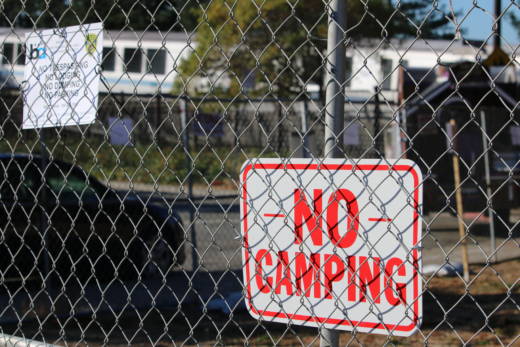A plot of dry grass is now fenced on one side of the BART tracks between Alcatraz Avenue and 63rd Street in South Berkeley. “No Camping” signs have been posted around the fence by transit agency police.
On the other side of the tracks, alongside Adeline Street, a separate encampment featuring a couple of dozen tents is still bustling. People sit in chairs around a communal table where watermelons and other food is available. Residents will tell you the encampment is safe and drug-free and that decisions are communal. It’s a model encampment, they say.
“It’s very forward-thinking, very structured,” said Trevor “T-Rex” Sullivan, who has lived at the encampment for about a month. “We show love and support to everyone.”
After posting notices to vacate both camps over the weekend, BART cleared the one east of the tracks Wednesday morning. But a federal judge granted a temporary restraining order on Tuesday blocking the transit agency from removing the encampment on the west side, named “Here There” after an art installation at the site. The camp’s residents will get a chance to argue their case next week.

Residents are part of a group called First They Came For The Homeless, which has protested against criminalizing homelessness in Berkeley the last couple of years. The “Here There” camp was established in December, according to a complaint that was filed.


